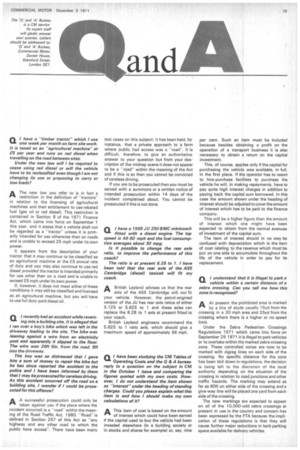n I have been studying the CM Tables of Operating
Page 81

If you've noticed an error in this article please click here to report it so we can fix it.
Costs and the 0 & A bureau reply to a question on the subject in CM in the October 1 issue and comparing the figures quoted with my own costs. However, I do not understand the item shown as "interest" under the heading of standing charges. Could you please explain what this item is and how I should make my own calculations of it?
AThis item of cost is based on the amount
of interest which could have been earned if the capital used to buy the vehicle had been invested elsewhere (in a building society or in stocks and shares for example) at, say, nine per cent Such an item must be included because besides obtaining a profit on the operation of a transport business it is also necessary to obtain a return on the capital investment.
This, of course, applies only if the capital for purchasing the vehicle was available, in full, in the first place. If the operator has to resort to hire-purchase facilities to purchase the vehicle he will, in makmg repayments, have to pay quite high interest charges in addition to paying back the capital sum borrowed. In this case the amount shown under the heading of interest should be adjusted to cover the amount of interest which has to be paid to the finance company.
This will be a higher figure than the amount of interest which one might have been expected to obtain from the normal avenues of investment of the capital sum.
The item of interest should in no way be confused with depreciation which is the item of cost relating to the revenue which must be put on one side to accumulate throughout the life of the vehicle in order to pay for its replacement.


































































































































